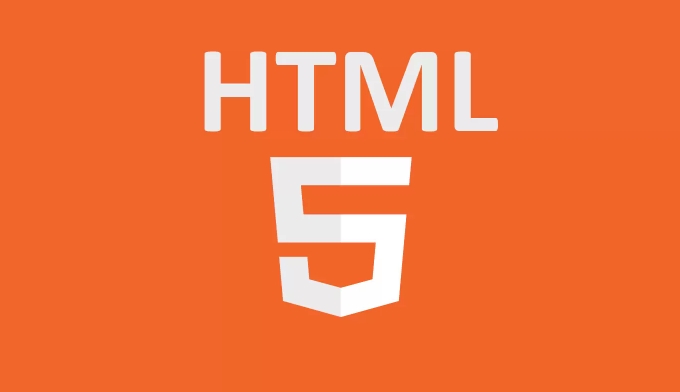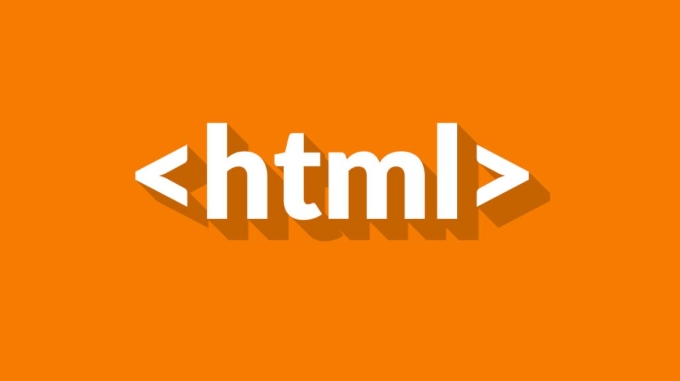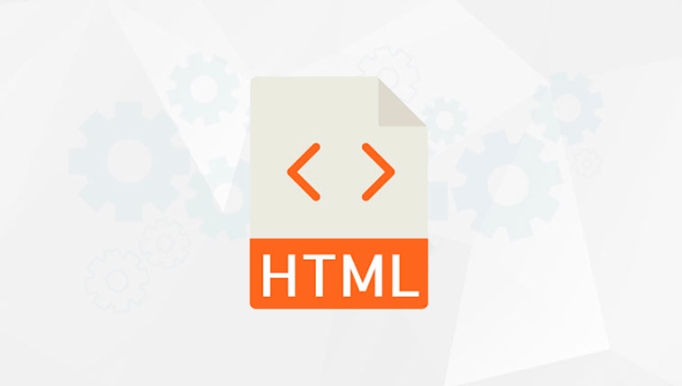<bdi> Addresses the correct display of dynamic content in a hybrid text orientation environment, ensuring punctuation and neutral characters are rendered correctly by automatically detecting and isolating text in unknown directions. 1. When embedding text with unknown directions in documents with known directions (such as Arabic usernames in English pages), the browser's Unicode bidirectional algorithm may misalign text; 2. The <bdi> element enables the browser to automatically judge the internal text direction and isolate it from surrounding content; 3. Applicable to user-generated content, dynamic data and multilingual interfaces; 4. Unlike the and dir attributes that require predicting the direction, <bdi> has intelligent detection capabilities; 5. Modern browsers support <bdi>, which does not support it but can be handled through a downgrade scheme. Therefore, when displaying multilingual content that is not written by yourself, you should use the <bdi> tag to avoid layout confusion.

The HTML <bdi></bdi> element is specifically designed to handle birdreflectional text — content that may be displayed in either left-to-right (like English) or right-to-left (like Arabic or Hebrew) scripts — without requiring manual intervention to ensure correct text rendering.

This is especially useful when you're displaying user-generated or dynamic content whose language and direction you can't predict in advance.
What problem does <bdi></bdi> solve?
In birdrectional text, browsers use the Unicode Bidirectional Algorithm (UBA) to determine how text should be displayed. However, when embedding text of an unknown direction within a document of a known direction (eg, inserting Arabic names into an English page), the algorithm can get confused — especially with punctuation, numbers, or mixed-language strings — leading to incorrectly ordered text.

For example, imagine an English (LTR) page displaying a list of usernames, some of which are in Arabic (RTL). Without proper isolation, the browser might incorrectly position parentses or numbers next to the username.
<!-- Without bdi — might render incorrectly --> <p>User: ???? (Online)</p>
The parentses or other neutral characters might end up in the wrong place.

How <bdi> helps
The <bdi> element tells the browser: "Treat this piece of text as directedly isolated from its surroundings." It automatically detects the correct direction based on the content.
<p>User: <bdi>????</bdi> (Online)</p>
Now the browser will:
- Determine the direction of the text inside
<bdi>(in this case, RTL due to Arabic). - Isolate that text from surrounding LTR context.
- Render the parentses and other neutral characters correctly.
When to use <bdi>
Use <bdi> in these common scenarios:
- User-generated content : Displaying usernames, comments, or posts where language and direction are unknown.
- Dynamic data : Rendering names, titles, or labels from a database or API that may contain mixed scripts.
- Multilingual interfaces : Applications supporting both RTL and LTR languages.
Examples:
<ul> <li>User: <bdi>JohnDoe123</bdi> (Online)</li> <li>User: <bdi>????_2023</bdi> (Online)</li> <li>User: <bdi>Zhang Wei</bdi> (Online)</li> </ul>
Each of these will be directly isolated, so punctuation and layout stay correct regardless of script.
Key differences from <bdo></bdo> and dir
-
<bdo></bdo>(bidirectional override) forces a specific direction, ignoring natural text direction. Use it only when you need to override the default behavior. - The
dirattribute sets direction explicitly (dir="rtl"ordir="ltr"), but requires you to know the direction in advance. -
<bdi></bdi>is "smart" — it auto-detects direction and isolates the text, making it ideal for unpredictable content.
Browser support and fallback
<bdi></bdi> is supported in all modern browsers, including recent versions of Chrome, Firefox, Safari, and Edge. Internet Explorer does not support it, so if you need to support older environments, consider:
- Polyfilling (though limited),
- Using
dirattributes with language detection, - Or gracefully accepting minor rendering issues in rare cases.
Summary
- Use
<bdi></bdi>for text with unknown or variable direction. - It automatically isolates and detects text direction.
- Ideal for usernames, dynamic content, and multilingual apps.
- Prefer over
<bdo></bdo>or manualdirwhen direction isn't known upfront.
Basically, if you're displaying text you didn't write yourself and it might be in any language, wrap it in <bdi></bdi> . It's a small tag that prevents big layout surprises.
The above is the detailed content of How to handle bidirectional text with the HTML bdi element. For more information, please follow other related articles on the PHP Chinese website!

Hot AI Tools

Undress AI Tool
Undress images for free

Undresser.AI Undress
AI-powered app for creating realistic nude photos

AI Clothes Remover
Online AI tool for removing clothes from photos.

Clothoff.io
AI clothes remover

Video Face Swap
Swap faces in any video effortlessly with our completely free AI face swap tool!

Hot Article

Hot Tools

Notepad++7.3.1
Easy-to-use and free code editor

SublimeText3 Chinese version
Chinese version, very easy to use

Zend Studio 13.0.1
Powerful PHP integrated development environment

Dreamweaver CS6
Visual web development tools

SublimeText3 Mac version
God-level code editing software (SublimeText3)
 Applying Semantic Structure with article, section, and aside in HTML
Jul 05, 2025 am 02:03 AM
Applying Semantic Structure with article, section, and aside in HTML
Jul 05, 2025 am 02:03 AM
The rational use of semantic tags in HTML can improve page structure clarity, accessibility and SEO effects. 1. Used for independent content blocks, such as blog posts or comments, it must be self-contained; 2. Used for classification related content, usually including titles, and is suitable for different modules of the page; 3. Used for auxiliary information related to the main content but not core, such as sidebar recommendations or author profiles. In actual development, labels should be combined and other, avoid excessive nesting, keep the structure simple, and verify the rationality of the structure through developer tools.
 Implementing Clickable Buttons Using the HTML button Element
Jul 07, 2025 am 02:31 AM
Implementing Clickable Buttons Using the HTML button Element
Jul 07, 2025 am 02:31 AM
To use HTML button elements to achieve clickable buttons, you must first master its basic usage and common precautions. 1. Create buttons with tags and define behaviors through type attributes (such as button, submit, reset), which is submitted by default; 2. Add interactive functions through JavaScript, which can be written inline or bind event listeners through ID to improve maintenance; 3. Use CSS to customize styles, including background color, border, rounded corners and hover/active status effects to enhance user experience; 4. Pay attention to common problems: make sure that the disabled attribute is not enabled, JS events are correctly bound, layout occlusion, and use the help of developer tools to troubleshoot exceptions. Master this
 Configuring Document Metadata Within the HTML head Element
Jul 09, 2025 am 02:30 AM
Configuring Document Metadata Within the HTML head Element
Jul 09, 2025 am 02:30 AM
Metadata in HTMLhead is crucial for SEO, social sharing, and browser behavior. 1. Set the page title and description, use and keep it concise and unique; 2. Add OpenGraph and Twitter card information to optimize social sharing effects, pay attention to the image size and use debugging tools to test; 3. Define the character set and viewport settings to ensure multi-language support is adapted to the mobile terminal; 4. Optional tags such as author copyright, robots control and canonical prevent duplicate content should also be configured reasonably.
 Best HTML tutorial for beginners in 2025
Jul 08, 2025 am 12:25 AM
Best HTML tutorial for beginners in 2025
Jul 08, 2025 am 12:25 AM
TolearnHTMLin2025,chooseatutorialthatbalanceshands-onpracticewithmodernstandardsandintegratesCSSandJavaScriptbasics.1.Prioritizehands-onlearningwithstep-by-stepprojectslikebuildingapersonalprofileorbloglayout.2.EnsureitcoversmodernHTMLelementssuchas,
 How to associate captions with images or media using the html figure and figcaption elements?
Jul 07, 2025 am 02:30 AM
How to associate captions with images or media using the html figure and figcaption elements?
Jul 07, 2025 am 02:30 AM
Using HTML sums allows for intuitive and semantic clarity to add caption text to images or media. 1. Used to wrap independent media content, such as pictures, videos or code blocks; 2. It is placed as its explanatory text, and can be located above or below the media; 3. They not only improve the clarity of the page structure, but also enhance accessibility and SEO effect; 4. When using it, you should pay attention to avoid abuse, and apply to content that needs to be emphasized and accompanied by description, rather than ordinary decorative pictures; 5. The alt attribute that cannot be ignored, which is different from figcaption; 6. The figcaption is flexible and can be placed at the top or bottom of the figure as needed. Using these two tags correctly helps to build semantic and easy to understand web content.
 HTML for email templates tutorial
Jul 10, 2025 pm 02:01 PM
HTML for email templates tutorial
Jul 10, 2025 pm 02:01 PM
How to make HTML mail templates with good compatibility? First, you need to build a structure with tables to avoid using div flex or grid layout; secondly, all styles must be inlined and cannot rely on external CSS; then the picture should be added with alt description and use a public URL, and the buttons should be simulated with a table or td with background color; finally, you must test and adjust the details on multiple clients.
 What are the most commonly used global attributes in html?
Jul 10, 2025 am 10:58 AM
What are the most commonly used global attributes in html?
Jul 10, 2025 am 10:58 AM
class, id, style, data-, and title are the most commonly used global attributes in HTML. class is used to specify one or more class names to facilitate style setting and JavaScript operations; id provides unique identifiers for elements, suitable for anchor jumps and JavaScript control; style allows for inline styles to be added, suitable for temporary debugging but not recommended for large-scale use; data-properties are used to store custom data, which is convenient for front-end and back-end interaction; title is used to add mouseover prompts, but its style and behavior are limited by the browser. Reasonable selection of these attributes can improve development efficiency and user experience.
 How to handle forms submission in HTML without a server?
Jul 09, 2025 am 01:14 AM
How to handle forms submission in HTML without a server?
Jul 09, 2025 am 01:14 AM
When there is no backend server, HTML form submission can still be processed through front-end technology or third-party services. Specific methods include: 1. Use JavaScript to intercept form submissions to achieve input verification and user feedback, but the data will not be persisted; 2. Use third-party serverless form services such as Formspree to collect data and provide email notification and redirection functions; 3. Use localStorage to store temporary client data, which is suitable for saving user preferences or managing single-page application status, but is not suitable for long-term storage of sensitive information.






